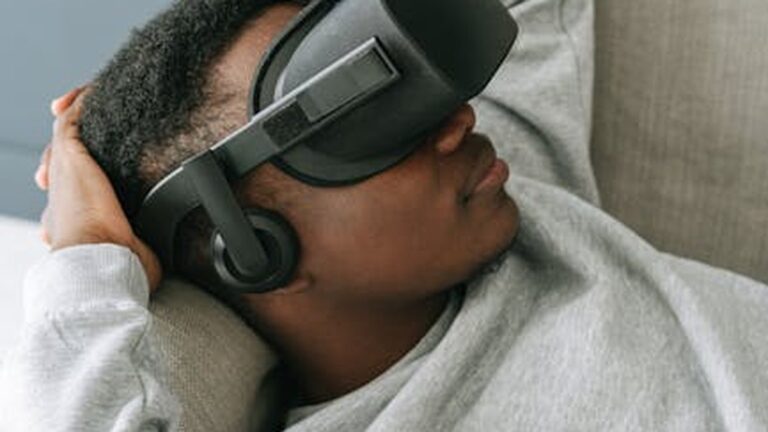Tech Neck Relief: Ergonomic Tips & Exercises for the Modern Workplace
In today’s digital age, we spend countless hours hunched over our smartphones, tablets, and computers. This constant forward head posture has led to a growing epidemic known as Tech Neck, characterized by neck pain, stiffness, and headaches. Fortunately, with a few simple adjustments to your ergonomic workplace setup and the incorporation of targeted exercises, you can find significant neck pain relief and prevent further issues.
Understanding Tech Neck
Tech Neck, also referred to as text neck or forward head posture, occurs when you consistently tilt your head forward to look at a screen. This posture puts excessive strain on the muscles, ligaments, and joints in your neck and upper back. For every inch your head moves forward, the weight on your neck increases by approximately 10 pounds. Imagine the strain of holding a bowling ball with your neck all day!
Studies have shown that prolonged periods of looking down at devices can lead to chronic neck pain, headaches, and even early onset arthritis. Furthermore, poor posture can restrict breathing and decrease energy levels, impacting overall productivity and well-being.
Symptoms of Tech Neck
Recognizing the symptoms of Tech Neck is the first step towards finding relief. Common symptoms include:
- Neck pain and stiffness
- Headaches, especially at the base of the skull
- Shoulder and upper back pain
- Numbness or tingling in the arms and hands
- Muscle spasms
- Reduced range of motion in the neck
Ergonomic Workplace Setup for Tech Neck Relief
Creating an ergonomic workplace setup is crucial for preventing and alleviating Tech Neck. By making a few adjustments to your workstation, you can significantly reduce strain on your neck and upper back.
Optimizing Your Monitor Position
The position of your monitor is paramount. Follow these guidelines:
- Eye Level: The top of your monitor should be at or slightly below eye level. This prevents you from tilting your head down.
- Arm’s Length Distance: Position your monitor an arm’s length away to avoid straining your eyes.
- Centered Alignment: Place your monitor directly in front of you to avoid twisting your neck.
Adjusting Your Chair and Posture
Your chair plays a significant role in maintaining good posture. Consider these factors:
- Lumbar Support: Ensure your chair has adequate lumbar support to maintain the natural curve of your spine.
- Adjustable Height: Adjust your chair height so your feet are flat on the floor and your knees are at a 90-degree angle.
- Armrests: Adjust the armrests so your shoulders are relaxed and your elbows are supported.
Keyboard and Mouse Placement
Proper keyboard and mouse placement can minimize strain on your wrists and neck:
- Close Proximity: Position your keyboard and mouse close to your body to avoid reaching.
- Neutral Wrist Position: Keep your wrists straight and neutral while typing and using the mouse. Consider using a wrist rest.
- Alternative Input Devices: Explore ergonomic keyboards and mice designed to promote better posture and reduce strain.
Laptop Ergonomics
Laptops are notorious for promoting poor posture. If you primarily use a laptop, consider these adjustments:
- External Monitor: Use an external monitor to raise the screen to eye level.
- External Keyboard and Mouse: Use an external keyboard and mouse to maintain a comfortable typing position.
- Laptop Stand: Invest in a laptop stand to elevate the screen.
Exercises for Tech Neck Relief
In addition to desk posture correction, incorporating simple posture exercises and office neck stretches into your daily routine can provide significant Tech Neck relief.
Neck Stretches
These stretches can help to release tension in the neck muscles:
- Chin Tucks: Gently tuck your chin towards your chest, as if making a double chin. Hold for 5 seconds and repeat 10-15 times. This strengthens the deep neck flexor muscles.
- Neck Tilts: Gently tilt your head towards your shoulder, holding the stretch for 15-30 seconds. Repeat on both sides.
- Neck Rotations: Slowly rotate your head from side to side, holding the stretch for 15-30 seconds on each side.
Shoulder Exercises
Strengthening your shoulder muscles can improve posture and reduce neck strain:
- Shoulder Rolls: Roll your shoulders forward and backward in a circular motion for 10-15 repetitions.
- Scapular Squeezes: Squeeze your shoulder blades together, holding for 5 seconds and repeating 10-15 times.
- Wall Angels: Stand with your back against a wall, arms raised to the sides with elbows bent at 90 degrees. Slide your arms up and down the wall, keeping your elbows and wrists in contact with the wall. Repeat 10-15 times.
Posture Correction Exercises
These exercises help to improve overall posture and reduce forward head posture:
- Chest Stretch: Stand in a doorway and place your forearms on the doorframe. Gently lean forward, feeling a stretch in your chest. Hold for 30 seconds and repeat 2-3 times.
- Thoracic Extension: Sit on a chair with your hands behind your head. Gently arch your back over the back of the chair, feeling a stretch in your upper back. Repeat 10-15 times.
Practical Tips for Preventing Tech Neck
Beyond ergonomic workplace setup and exercises, incorporating these practical tips into your daily routine can help prevent Tech Neck:
- Take Frequent Breaks: Get up and move around every 20-30 minutes.
- Stretch Regularly: Incorporate neck and shoulder stretches throughout the day.
- Be Mindful of Your Posture: Consciously maintain good posture while sitting and standing.
- Limit Screen Time: Reduce your overall screen time, especially outside of work hours.
- Use Voice Commands: Utilize voice commands on your devices to minimize the need to look down.
References
-
Harvard T.H. Chan School of Public Health Physical Activity
– Research-based physical activity recommendations. -
Centers for Disease Control and Prevention Physical Activity
– Government physical activity guidelines for all ages. -
American Heart Association Fitness
– Cardiovascular health and exercise recommendations.
Conclusion
Tech Neck is a prevalent issue in today’s technology-driven world, but it’s also preventable and treatable. By implementing the ergonomic tips and exercises outlined in this guide, you can significantly reduce neck pain, improve your posture, and boost your overall well-being. Remember, consistency is key. Make these adjustments a part of your daily routine to experience long-term neck pain relief and a healthier, more productive work life. Don’t underestimate the power of a well-adjusted workstation and a few simple stretches to combat the effects of modern technology. Prioritize your health and well-being, and your body will thank you.






